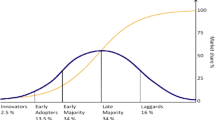Abstract
Introduction
As healthcare expenses are escalating in many countries, the sector faces a new challenge of becoming more cost efficient. There is an urgent need for more accurate data on the costs of healthcare procedures. The cost of Positron Emission Tomography (PET) with [18F]-fludeoxyglucose (18F-FDG) studies is mainly influenced by the price of the radiopharmaceutical, which may vary throughout Europe from 300 to 500 Euro per patient dose (370 MBq). The aim of the current study is to conduct an activity-based costing (ABC) estimation of 18F-FDG production in Europe to better identify the different cost components and to analyse their relative contribution to the total cost.
Materials and methods
Financial data were collected on capital expense and global operating costs through interviews with industry experts, PET centre managers, evaluation of prior studies, and review of expenses incurred at the University Medical Centre in Groningen (The Netherlands). After mapping the activities, we divided the cost in five categories: wage, equipment, consumables, overhead and space costs. A sensitivity analysis was performed for key cost components, including the compliance with regulatory requirements.
Results
The critical factor for profitability was throughput. Including the European regulation procedure, the cost for 370 MBq 18F-FDG patient dose, 3 h EOS without delivery cost, ranges between 155 and 177 Euro/dose for two production runs and between 210 and 237 Euro/dose for one production run. These costs are predominantly determined by personnel and equipment costs, although the cost for quality assurance increases steadily.
Conclusion
The ABC analysis provides significant insight into the production cost components of 18F-FDG through different operating configurations. Reductions in equipment prices, increased availability of radiopharmaceuticals, growth in demand, and improvements in reimbursement will all contribute to the financial viability of this imaging technique.

Similar content being viewed by others
References
Delbeke D, Martin WH. Positron emission tomography imaging in oncology. Radiol Clin North Am 2001;39:883–917.
Weber WA. Use of PET for monitoring cancer therapy and for predicting outcome. J Nucl Med 2005;46:983–95.
Avril NE, Weber WA. Monitoring response to treatment in patients utilizing PET. Radiol Clin North Am 2005;43:189–204.
Herholz K, Heiss WD. Positron emission tomography in clinical neurology. Mol Imaging Biol 2004;6:239–69.
Machac J. Cardiac positron emission tomography imaging. Semin Nucl Med 2005;35:17–36.
Lissak RJ. The economics of creating a positron emission tomography center. Semin Nucl Med 2000;30:299–305.
Monge P. The importance of activity-based methods in radiology and the technology that now makes this possible. Radiol Manage 2006;28:52–5.
Player S. Activity-based analyses lead to better decision making. Healthc Financ Manage 1998;52:66–70.
Adam T, Koopmanschap MA, Evans DB. Cost-effectiveness analysis: can we reduce variability in costing methods? Int J Technol Assess Health Care 2003;19:407–20.
Baker J. Activity-based costing and activity-based management for health care. Aspen Publishers ed; 1998.
Cohen MD, Hawes DR, Hutchins GD, McPhee WD, LaMasters MB, Fallon RP. Activity-based cost analysis: a method of analyzing the financial and operating performance of academic radiology departments. Radiology 2000;215:708–16.
Laurila J, Suramo I, Brommels M, Tolppanen EM, Koivukangas P, Lanning P, et al. Activity-based costing in radiology. Application in a pediatric radiological unit. Acta Radiol 2000;41:189–95.
Canby JBt. Applying activity-based costing to healthcare settings. Healthc Financ Manage 1995;49:50–2, 54–6.
Chan YC. Improving hospital cost accounting with activity-based costing. Health Care Manage Rev 1993;18:71–7.
Emmett D, Forget R. The utilization of activity-based cost accounting in hospitals. J Hosp Mark Public Relations 2005;15:79–89.
Gabram SG, Mendola RA, Rozenfeld J, Gamelli RL. Why activity-based costing works. Physician Exec 1997;23:31–7.
Negrini D, Kettle A, Sheppard L, Mills GH, Edbrooke DL. The cost of a hospital ward in Europe: is there a methodology available to accurately measure the costs? J Health Organ Manag 2004;18:195–206.
Ramsey RHt. Activity-based costing for hospitals. Hosp Health Serv Adm 1994;39:385–96.
Chuck A, Jacobs P, Logus JW, St Hilaire D, Chmielowiec C, McEwan AJ. Marginal cost of operating a positron emission tomography center in a regulatory environment. Int J Technol Assess Health Care 2005;21:442–51.
Crott R, Makris N, Barkun A, Fallone C. The cost of an upper gastroduodenal endoscopy: an activity-based approach. Can J Gastroenterol. 2002;16:473–82.
Deveaux M, Rousseau J, Marchandise X. [The exact costs of studies in a hospital nuclear medicine department]. Rev Epidemiol Sante Publique 1992;40:56–65.
Lievens Y, van den Bogaert W, Kesteloot K. Activity-based costing: a practical model for cost calculation in radiotherapy. Int J Radiat Oncol Biol Phys 2003;57:522–35.
Suthummanon S, Omachonu VK, Akcin M. Applying activity-based costing to the nuclear medicine unit. Health Serv Manage Res 2005;18:141–50.
Drummond M, O’Brien B, Stoddart G. Methods for the economic evaluation of health care programs. Oxford: Oxford University Press; 1997.
Acknowledgment
The authors would like to express thank to Rudi Dierckx (University Medical Centre Groningen, Groningen, The Netherlands), Rudi Verbruggen (Siemens, Erlangen, Germany), Stephane Lucas (LARN, Namur, Belgium), Patrick Jeanmart (IBA, Louvain-La-Neuve, Belgium) and Charles Fallais (Cyclotron, University of Liège, Belgium) for the intriguing and helpful discussions. Other FDG manufacturers have contributed to this paper, but they explicitly asked to remain anonymous.
Author information
Authors and Affiliations
Corresponding author
Rights and permissions
About this article
Cite this article
Krug, B., Van Zanten, A., Pirson, AS. et al. Activity-based costing evaluation of [18F]-fludeoxyglucose production. Eur J Nucl Med Mol Imaging 35, 80–88 (2008). https://doi.org/10.1007/s00259-007-0551-x
Received:
Accepted:
Published:
Issue Date:
DOI: https://doi.org/10.1007/s00259-007-0551-x




